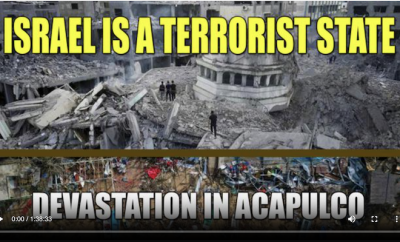 Wikipedia - "Allah" (God) in Hagia Sophia, Istanbul, Turkey.
Wikipedia - "Allah" (God) in Hagia Sophia, Istanbul, Turkey.
Featured
From Anarchy to degeneration- Imposing External Law.Islam. Extract Two. Part Seven: The Path Of The Masters
by Katherine Frisk, The Phaser.com:
[Editor’s note: Dr. Johnson’s story of Islam follows the conventional historical account. In 1939 he could not have foreseen the upheavals that the region has gone through throughout the closing of the 20th Century and the opening of the 21st. More recently the political changes seen in the Middle East in the first part of the 21st Century have exposed a clear divide in Islam, between extremist groups in both the Sunni and Shiite camps. The essential difference between these two groups lies in the disagreement as to who the rightful inheritors and leaders of Islam were and still are today.
The Sunni, situated mostly in the western part of the Middle East, believe that the heirs of the four caliphs are the rightful religious rulers of Islam and have ruled the Arab world until the end of the Ottoman Empire after World War one. The Sunni believe that the Mahdi, who will unite the world under one caliphate has yet to be born.
The Shiite, situated mostly in the eastern part of the Middle East, believe that only the heirs of Ali, fourth caliph and Twelfth Imam, are the rightful rulers of Islam. This line was said to have “disappeared”in 931 A.D. With the fall of the Ottoman Empire at the beginning of the 20th Century, many Shia believe in the imminent return of the Twelfth Imam. The Mahdi, “the rightly-guided one.” He is believed to be descended from the heirs of Ali, the Twelfth Imam.
The Sunni and more specifically, the Muslim Brotherhood and their extremist offshoots such as the Wahabi, Al Qaeda, ISIL, believe that all non believers who refuse to convert, must be put to the sword.
The Shiite on the other hand, believe that the Mahdi will arrive with the second coming of Jesus and together they will fight against the anti-Christ. They also hold fast to the belief in tolerance and acceptance of those who choose to follow either Judaism or Christianity, and treat these religious groups with respect. This is born out by two factors. There are more Jews living in Iran than in any country outside of Israel, where they are protected and take part in all tiers of society. During the rampaging assassinations and mass killings of Christians throughout Iraq and Syria during 2014 and 2015, it was the Shiite who protected and helped the ancient Orthodox Christian communities that were terrorized by ISIL. The Islamic State mercenaries.
A similar divide can be seen in the Christian faith. The eastern Orthodox Churches are an Apostolic faith, where all priests are considered to be equal, as were the apostles, until the Second coming of Jesus. All leaders might be first, but they are first amongst equals.
In the western Roman Catholic faith, there is a definite hierarchy with the Pope as head of the church. He is considered to be the embodiment and representative of Christ on earth. Much like the Muslim Brotherhood and the Wahabi today, for the last 1,000 years the Roman Catholic Church has carried out an Inquisition against all non believers. If they did not convert and swear allegiance to the Pope and the Vatican, they were tortured and burnt at the stake. Millions throughout Europe lost their lives. The Fourth Crusade in the 11th century A.D., the crusades into the Middle East during the Middle ages, the Napoleonic wars as well as the first and second world wars were an attempt to bring the Orthodox Christian church under the authority of the Vatican. The three Papal bulls in turn, represented by the three-tiered crown decree that the Pope owns the planet, all bodies on the planet and all souls.
In the Hebrew faith we also see this divide as explored in the previous section, between the authority of the temple in Jerusalem, the monarchy under the line of the tribe of Judah being a descendant of King David, and the other tribes of Israel, notability the Samaritans and the Essenes, who do not believe in temple, high priest, monarchy or the dominance of the tribe of Judah over all others.
Islam accords deep respect for Abraham, Moses and Jesus. However, like the Essenes and the Samaritans they do not include David in this list of respected ancestors. They regard Jesus as a prophet, one of many, not as the Son of God, a belief that finds support in the Dead Sea Scrolls and the sections on the Teachers of Righteousness.
As there are conflicting and contradictory texts in both the Old and the New Testament so there are conflicting and contradictory texts in the Quran itself. On the one hand there are the teachings that every infidel, including Jews and Christians must be put to death if they do not convert. On the other hand there are the many wisdom teachings that speak of peace as the central factor in Islam.
In all three religions, there are social, political and economic consequences on each side of the divide. In all of the above one side of the divide supports extreme forms of externally imposed laws while the other supports the internalization of both social and spiritual laws, loving our neighbours without the desire or need to control and possess and leads towards anarchy.
The life of Mohamed also falls into two categories. His life prior to the attempt on his life and his life subsequent to it, two distinct categories, the teachings of which are so interwoven together into the texts that often one precept runs into the next.
In the former he taught a religion of peace, of toleration and understanding between Islam, the Hebrew faith and Christianity. He abhorred violence and practised monogamy. In the latter he taught and practised a violent religion of persecution of the non believer and death to Hebrews and Christians. Islam became a religion of the sword and he practised polygamy.
Some scholars have come to two conclusions. The first being that there was no “attempt”on his life, but that he was assassinated and after a period of “seclusion” a double took his place and advocated a religion much like we see today in the Wahabi sect and ISIL. Other scholars are of the opinion that the texts themselves were tampered with by certain scribes from Rome.]
The word Islam means ‘submission’ (to the will of God). Islam’s founders and advocates regard it as an exposition of the law of God. Islam, like all other religions, came to fill a gap, to supply a need. It closed up a gap in history. Arabia had been for more than fifteen centuries a reservoir of Semitic tribes, born and nurtured ‘sons of the desert’. They were nomadic, warlike, vigorous and restless. In religion they were idol worshippers. Mecca, even then, was a noted center of pilgrimage, and the sacred Kaaba was already an object of worship.
While Mecca thrived upon its revenues from pilgrims, the people derived some religious notions from Judaism and Christianity, both of which had their devotees in Mecca and Medina. They were a jolly lot, and merry .went their songs, mingling with the tinkling of the camel’s bells. Into this medley of religions, this hodge podge of beliefs and sensual pastimes, Mohammed was born in the Christian year of 570. He was a poor shepherd boy. He was imaginative, enterprising and deeply religious. He married a rich widow named Kadejah. That marriage gave him prestige, and when his wife became his first disciple, his real work began and rapidly gained in momentum.
At first timidly, and then more boldly, Mohammed began to preach against the prevailing idol worship. “There is one God, Allah the Merciful.” This was his first public declaration, and certainly that pronouncement was greatly needed in Arabia. Of course, this antagonized those who profited from the idol-worshipping pilgrims. That struck at the tender spot among Meccans. Did they not prosper and drink their wines at the expense of idol worshippers?
The Prophet must be given credit for the great service he rendered to his people. He gave himself to the task of pulling them out of the mire of superstition, a fact which cannot be doubted by any unprejudiced student of history. It took a long time to quicken the enfeebled circulation of a decadent period but eventually the learning, fostered by Islam in its chief centers like Alexandria, Cordova and Baghdad, gave the stimulus to the great Renaissance which was soon to shake all Europe. Judaism had lost much of its former vitality. The dark age of Christendom had spread its black wings over the remnants of the Roman and Byzantine empires. Europe itself was stagnant.
The empire of the Prophet now extended from the Indus on the east, Turkestan and the Caucasus on the north, over all northern Africa, and into Spain on the west. When, in 1453, Constantinople fell to the final rally of the armies of Islam, the old church of Santa Sophia was converted into a mosque and the last Greek Christian wept bitter tears as he fled from the city of Constantine.
NEXT:
Anarchists and The Golden Age- Extract One: The Path of The Masters












